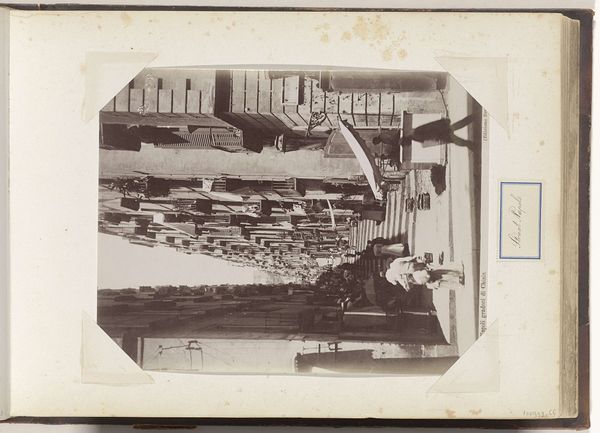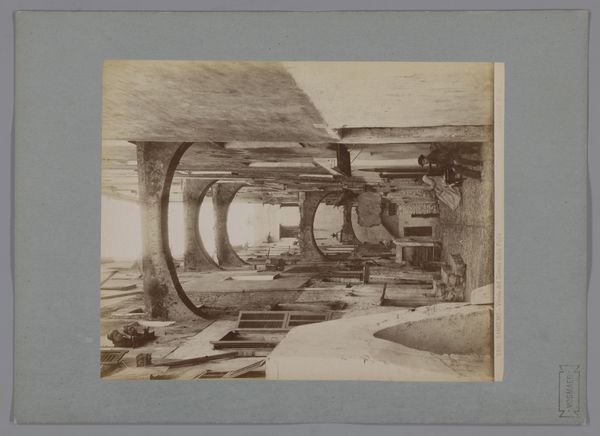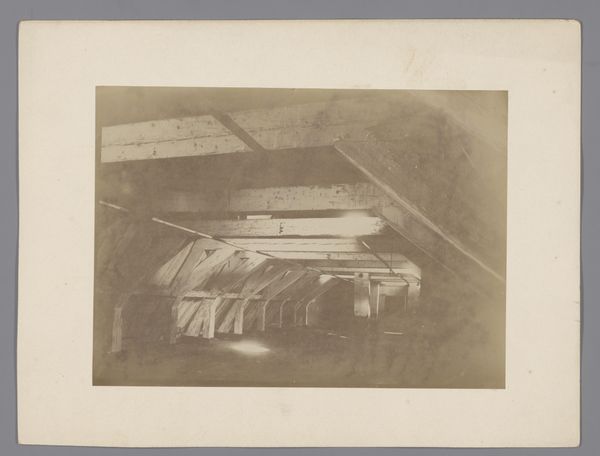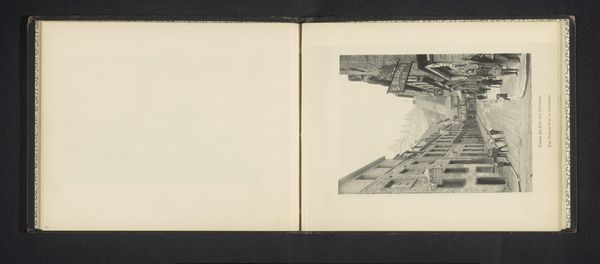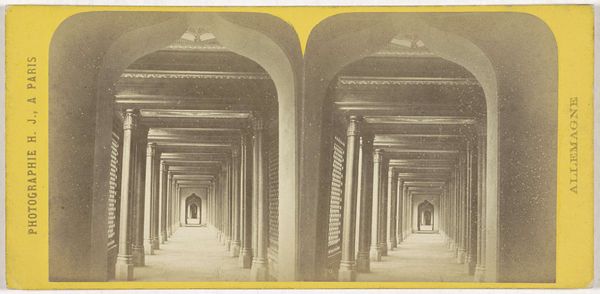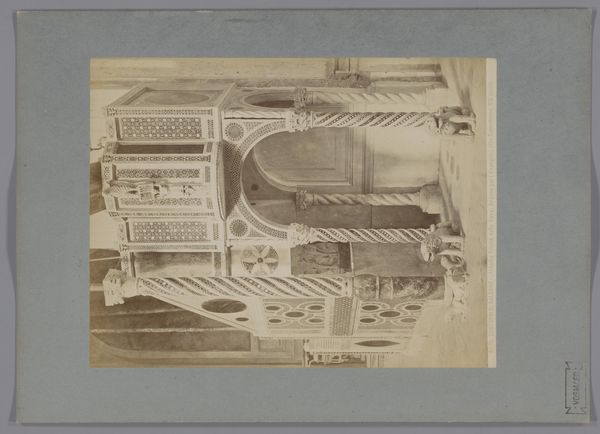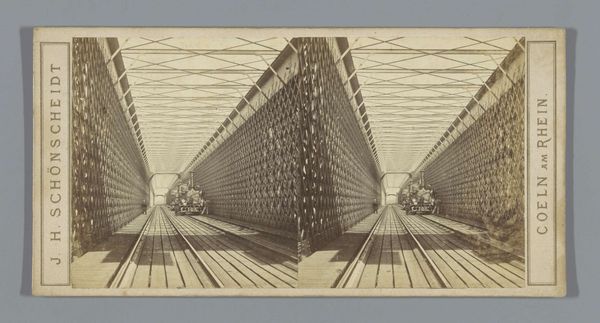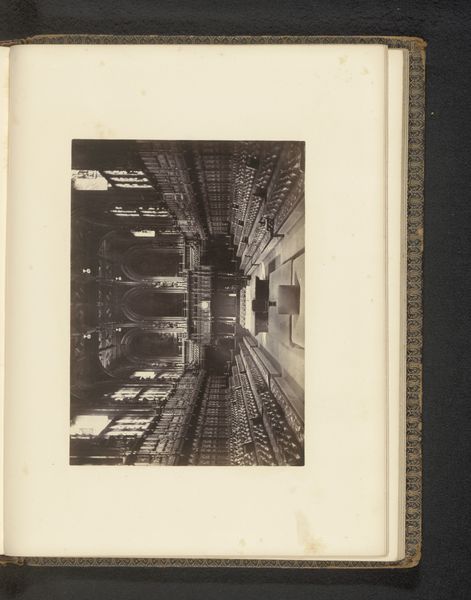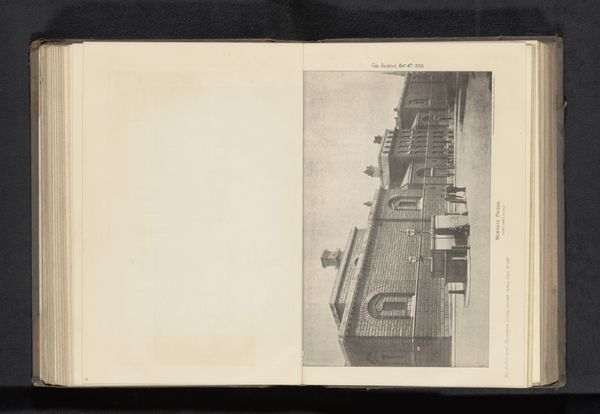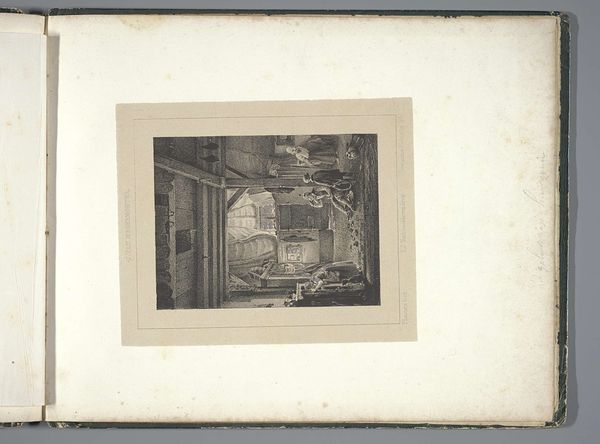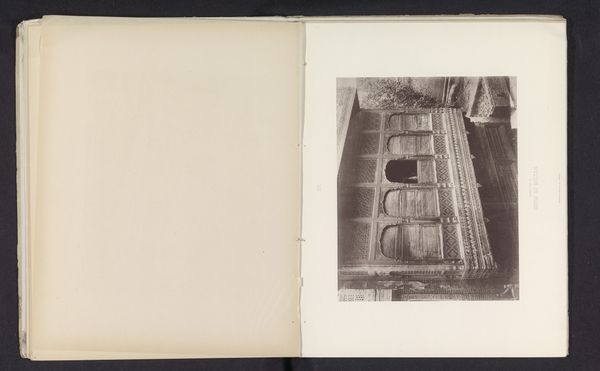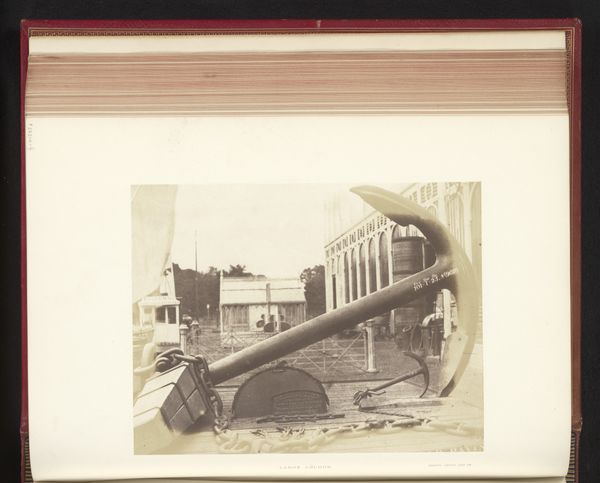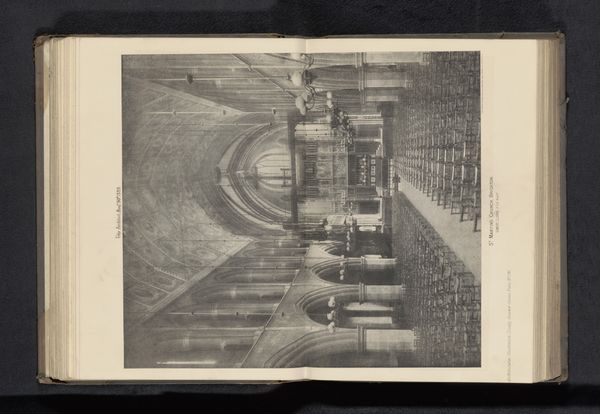
print, photography
# print
#
photography
#
hudson-river-school
#
realism
Dimensions: height 87 mm, width 176 mm
Copyright: Rijks Museum: Open Domain
Curator: The sheer volume is chilling. Editor: I agree. Let's delve into this striking image: "Wapenmagazijn in Sing Sing Correctional Facility," or armory, at Sing Sing Prison. Taken between 1871 and 1877 by G.W. Pach. It's a photographic print, documenting a space dedicated solely to weapons. The original function is disturbing and it really invites discourse around race and prison today, given how many people of color are in prison, and the original labor of those incarcerated building wealth for others. Curator: Absolutely. I notice how Pach utilizes a precise orthogonal perspective, really emphasizing the rigidity and repetition. The rifles, stacked in neat rows, form a grid, a kind of visual order imposed upon potential chaos. This has ties to architecture of that era. The grid in itself is quite beautiful to view given the subject of the space. Editor: And what’s reflected here? Mass incarceration isn't new. Following the Civil War and the formal abolition of slavery, a new form of forced labor arose: the convict lease system. This system disproportionately impacted Black men, funnelling them into prisons for minor offenses, then leasing their labor to private industries. Looking at this photograph, these arms make me think of all of that and how little has changed since then. Curator: I hadn’t even thought about that. But from my perspective I was drawn to the materiality, or perhaps the tonal qualities of this print. The limited grayscale palette actually emphasizes the severity and utilitarianism of this space, what do you think? Editor: That’s valid. Considering the period and the prevailing attitudes toward crime and punishment, this image likely served a very different purpose than simple record keeping. The organization of this weaponry feels celebratory or even an announcement of the supposed social control—really highlighting the racial disparity. Curator: True, although my analysis suggests this speaks to power dynamics through an architectural framework, showing the strict organization necessary for power. Either way, this evokes unease as both a formalist creation and commentary. Editor: Absolutely. This photograph definitely transcends a simple depiction of weaponry— it is deeply rooted in our society even today, showing a system still built on unequal measures.
Comments
No comments
Be the first to comment and join the conversation on the ultimate creative platform.
